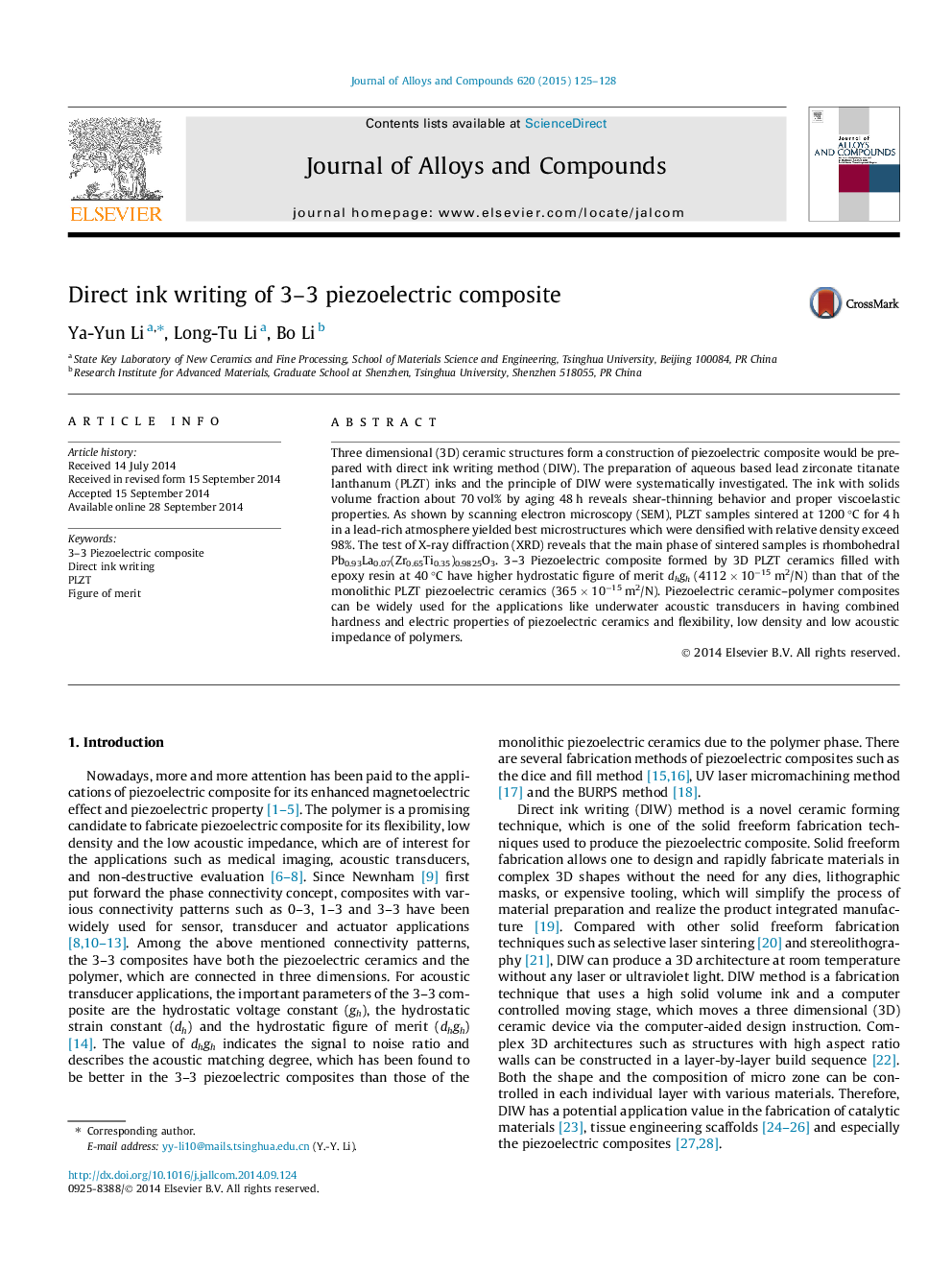| کد مقاله | کد نشریه | سال انتشار | مقاله انگلیسی | نسخه تمام متن |
|---|---|---|---|---|
| 1610153 | 1516273 | 2015 | 4 صفحه PDF | دانلود رایگان |

• Three dimensional ceramic structures were prepared with direct ink writing method.
• The PLZT ink shows a shear-thinning behavior.
• 3–3 Piezoelectric composite formed by 3D PLZT ceramics filled with epoxy resin at 40 °C have higher hydrostatic figure of merit dhgh (4112 × 10−15 m2/N) than that of the monolithic PLZT piezoelectric ceramics (365 × 10−15 m2/N).
Three dimensional (3D) ceramic structures form a construction of piezoelectric composite would be prepared with direct ink writing method (DIW). The preparation of aqueous based lead zirconate titanate lanthanum (PLZT) inks and the principle of DIW were systematically investigated. The ink with solids volume fraction about 70 vol% by aging 48 h reveals shear-thinning behavior and proper viscoelastic properties. As shown by scanning electron microscopy (SEM), PLZT samples sintered at 1200 °C for 4 h in a lead-rich atmosphere yielded best microstructures which were densified with relative density exceed 98%. The test of X-ray diffraction (XRD) reveals that the main phase of sintered samples is rhombohedral Pb0.93La0.07(Zr0.65Ti0.35)0.9825O3. 3–3 Piezoelectric composite formed by 3D PLZT ceramics filled with epoxy resin at 40 °C have higher hydrostatic figure of merit dhgh (4112 × 10−15 m2/N) than that of the monolithic PLZT piezoelectric ceramics (365 × 10−15 m2/N). Piezoelectric ceramic–polymer composites can be widely used for the applications like underwater acoustic transducers in having combined hardness and electric properties of piezoelectric ceramics and flexibility, low density and low acoustic impedance of polymers.
Journal: Journal of Alloys and Compounds - Volume 620, 25 January 2015, Pages 125–128